Taj Mahal: Love's Ethereal White Marble Dream

The Taj Mahal is one of the most iconic landmarks in the world, attracting millions of visitors every year. It is a magnificent mausoleum located in Agra, India, and is considered to be one of the seven wonders of the world. This architectural masterpiece is not only a symbol of love but also a testament to the skill and craftsmanship of its builders.
Brief history of the Taj Mahal
The Taj Mahal was commissioned in 1632 by the Mughal emperor Shah Jahan in memory of his beloved wife, Mumtaz Mahal. Construction of this marvellous structure took over 20 years and involved the expertise of over 20,000 workers. The materials used to build the Taj Mahal were sourced from various parts of India and from as far away as Afghanistan and China.
During its construction, the Taj Mahal underwent various challenges and changes in design. The final result, however, is a perfect blend of Islamic, Persian, and Indian architectural styles. The intricate marble inlays, delicate carvings, and symmetrical design are a testament to the craftsmanship of the time.
Symbolism and significance of the Taj Mahal
The Taj Mahal is not only a grand mausoleum but also a symbol of eternal love. It is a constant reminder of Shah Jahan's love for Mumtaz Mahal and the grief he experienced upon her death. The white marble structure represents purity, and the minarets symbolize the presence of Allah.
The garden surrounding the Taj Mahal is laid out in the traditional Persian Charbagh style, symbolizing paradise. The reflection of the Taj Mahal in the pools adds to the heavenly ambience of the place, especially during sunrise and sunset.
The importance of the Taj Mahal extends beyond its architectural beauty. It has become a symbol of India's rich cultural heritage and has been recognized by UNESCO as a World Heritage Site. Its universal appeal continues to inspire awe and admiration in people from all over the world.

Architectural Marvel
The Taj Mahal is an architectural marvel that never fails to captivate visitors with its grandeur and beauty. As you step into the grounds of the Taj Mahal, you are immediately struck by the majestic sight of the marble mausoleum against the clear blue sky.
Design and layout of the Taj Mahal
The Taj Mahal is designed in a way that reflects perfect symmetry and balance. The mausoleum is situated on a raised marble platform, emphasizing its importance. The main structure is flanked by four slender minarets, standing tall and adding to the elegance of the complex.
The garden surrounding the Taj Mahal is meticulously laid out in the traditional Persian Charbagh style. The geometric patterns and perfectly aligned pathways create a sense of harmony and tranquillity. As you stroll through the garden, you can enjoy the symmetrical layout and lush greenery.
Intricate marble inlay work and architectural features
One of the striking features of the Taj Mahal is the intricate marble inlay work. The walls of the mausoleum are adorned with delicate floral patterns and calligraphy created by skilled craftsmen. The use of precious stones, such as jasper and jade, adds to the richness of the design.
The main dome of the Taj Mahal is a marvel of engineering, with its perfect proportions and exquisite craftsmanship. It is adorned with intricate carvings and topped with a finial, which is said to be made of gold. The dome is a key element of the architectural design and is visible from afar, creating a sense of awe and wonder.
As you explore the Taj Mahal, you will be amazed by the attention to detail in every aspect of its design. From the precise symmetry to the intricate carvings, every element of the Taj Mahal is a testament to the skill and craftsmanship of its builders.

History and Creation
Emperor Shah Jahan's inspiration and motivation
Emperor Shah Jahan, the Mughal ruler, was deeply moved by the death of his beloved wife, Mumtaz Mahal. In her memory, he decided to build a magnificent mausoleum that would be a symbol of their eternal love. The Taj Mahal was meant to be a tribute to Mumtaz Mahal and a lasting testament to their love.
Construction process and labor involved
The construction of the Taj Mahal began in 1632 and took approximately 22 years to complete. It is said that over 20,000 skilled artisans and labourers from all over the Mughal Empire were involved in the construction process. The finest materials were sourced from different parts of India and Central Asia to ensure the highest quality.
Every detail of the Taj Mahal was meticulously planned and executed. The craftsmen worked tirelessly to create the intricate marble inlay work and architectural features that make the Taj Mahal unique. The construction process was a true labour of love and dedication.
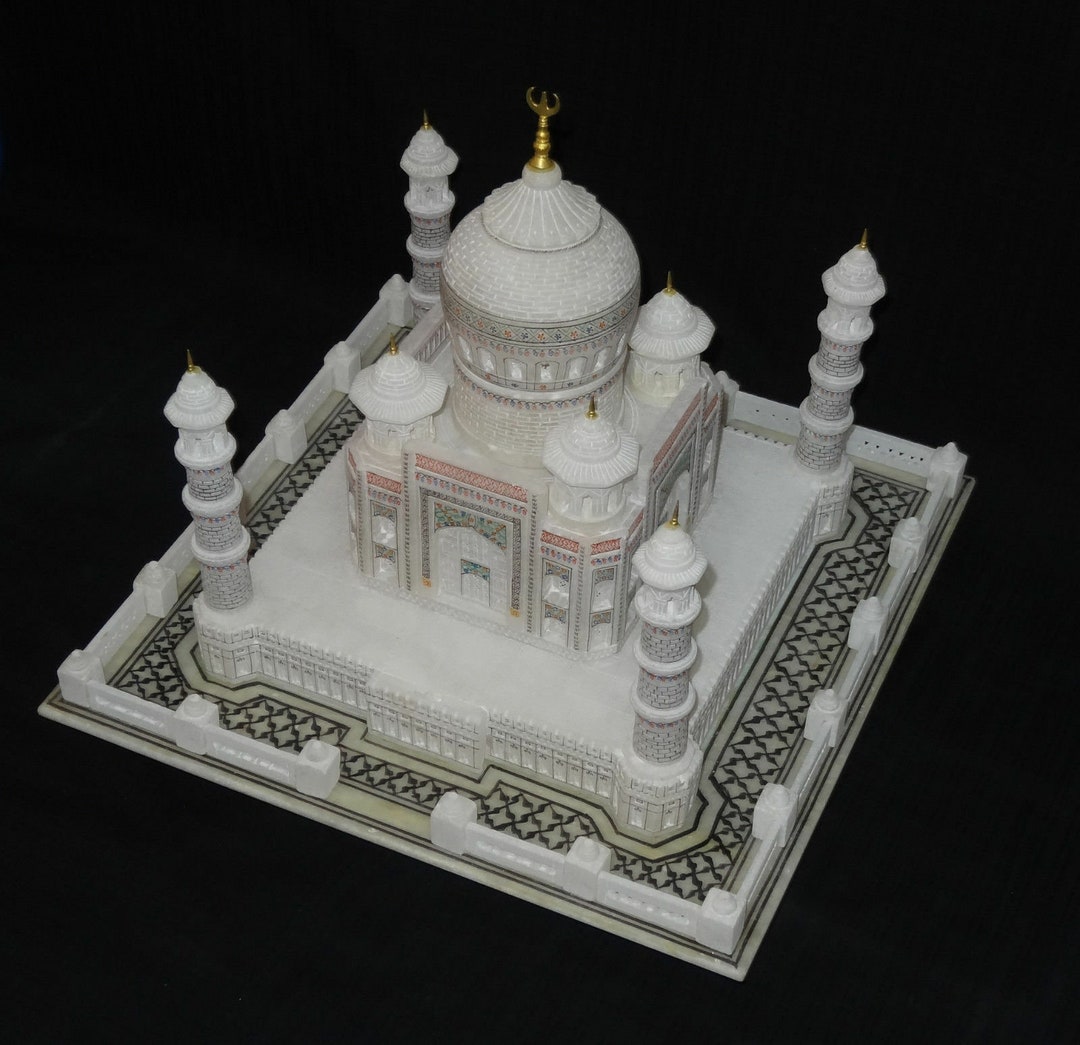
White Marble Splendor
The stunning white marble exterior
As you marvel at the Taj Mahal, you cannot help but be awe-inspired by its stunning white marble exterior. The pure white colour of the marble shimmers in the sunlight, giving the monument an ethereal glow. The intricate inlay work and delicate carvings stand out against the white backdrop, adding to the beauty of the Taj Mahal.
Reflections and changing hues of the Taj Mahal
As the day progresses, the Taj Mahal undergoes a mesmerizing transformation. The changing hues of the white marble create a visual spectacle, as the monument reflects different shades of pink, orange, and golden as the sun rises and sets. The reflection of the Taj Mahal in the surrounding pools adds to its ethereal beauty and creates a magical ambience.
Gardens and Surroundings
Mughal-style Charbagh gardens
As you stroll through the gardens surrounding the Taj Mahal, you will be transported back in time to the era of the Mughal Empire. The Mughal-style Charbagh gardens are a sight to behold, with their meticulously manicured lawns, fountains, and pathways. These gardens, divided into four equal quadrants, symbolize the paradise described in Islamic literature.
Water features and landscaping
Water plays a significant role in the design of the Taj Mahal's gardens. The central water channel reflects the complex, creating a mirror-like effect that enhances its beauty. The fountains, strategically placed throughout the gardens, add a touch of elegance and serenity. The lush greenery and vibrant flowers that adorn the landscape further enhance the overall ambience of the Taj Mahal.
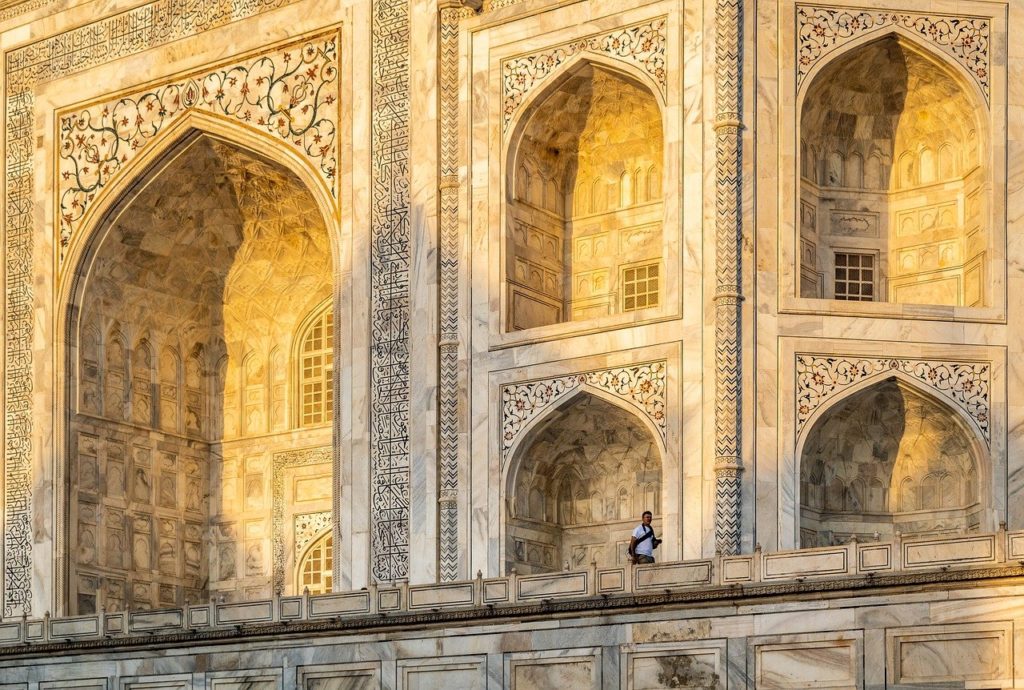
Interiors and Decorations
Ornate interior detailing
As you step inside the Taj Mahal, prepare to be amazed by the intricate detailing that adorns its interiors. Every surface, from the walls to the ceilings, is adorned with stunning designs and patterns. The delicate carvings and ornate marblework exhibit the exceptional craftsmanship of the Mughal artisans. The attention to detail is truly remarkable, with no two sections of the Taj Mahal's interior being exactly alike.
Precious gemstone inlays and calligraphy
One of the most awe-inspiring features of the Taj Mahal's interior is its exquisite gemstone inlays. The walls are adorned with intricate patterns made of semi-precious stones, including jasper, lapis lazuli, and malachite. These gemstones are carefully cut and shaped to fit together perfectly, creating mesmerizing designs that catch the light and add a luxurious touch to the surroundings.
In addition to the gemstone inlays, the interior walls are embellished with calligraphy. Verses from the Quran are delicately inscribed in flowing Arabic script, adding a spiritual element to the grandeur of the Taj Mahal. The calligraphy, created by skilled artisans, is not only a visual delight but also pays homage to the Islamic heritage and symbolism.
The interiors of the Taj Mahal are a testament to the opulence and craftsmanship of the Mughal Empire. The ornate detailing, precious gemstone inlays, and calligraphy all contribute to creating a captivating atmosphere inside this monumental structure. A visit to the Taj Mahal is not just a glimpse into the past but also a journey into a world of beauty and artistry.
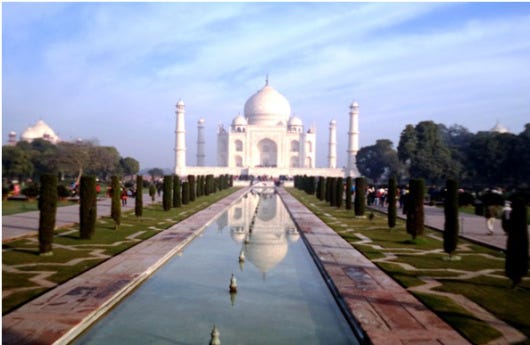
Love Story Behind the Taj Mahal
The love story between Emperor Shah Jahan and Mumtaz Mahal
As you enter the magnificent Taj Mahal, you are not just witnessing a testament of architectural brilliance but stepping into a love story that has stood the test of time. The Taj Mahal was built by Emperor Shah Jahan in memory of his beloved wife, Mumtaz Mahal. Their love story is one of deep affection and devotion that has immortalized their bond.
Symbolism of eternal love and devotion
The Taj Mahal is not just a mausoleum; it is a symbol of eternal love and devotion. Its pure white marble represents purity and the enduring nature of love. The symmetry and balance of the structure symbolize the harmony and unity between Shah Jahan and Mumtaz Mahal.
The Taj Mahal's four minarets symbolize the four pillars of love – patience, faith, happiness, and empathy. The intricate floral motifs and calligraphy on the walls serve as a reminder of the beauty and fragility of life, urging us to cherish our loved ones and appreciate the moments we have together.
The Taj Mahal remains a significant landmark not just for its architectural beauty but also for the love story it encapsulates. It serves as a reminder that love can transcend time and boundaries and that true love is worth immortalizing.
So, if you ever find yourself standing in front of the Taj Mahal, take a moment to reflect on the love and devotion that brought this magnificent structure into existence. Let the beauty and grandeur of the Taj Mahal inspire you to cherish and celebrate the love in your own life.
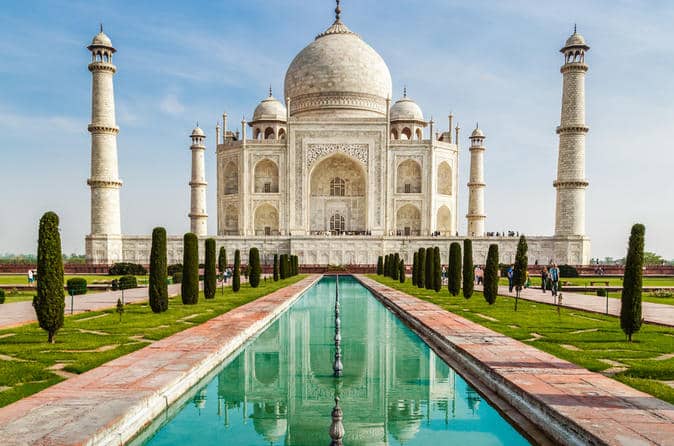
Preservation and Restoration Efforts
Challenges in conservation and restoration
Preserving a monument as iconic as the Taj Mahal is no easy task. Over the years, various factors such as pollution, weathering, and human activity have taken a toll on the structure. The intricate marble carvings and delicate details require constant attention to prevent deterioration. Some of the key challenges faced in the conservation and restoration efforts include:
-
Air pollution: The high level of air pollution in the surrounding areas has led to the yellowing of the marble surface. This not only affects the aesthetic appeal but also compromises the structural integrity.
-
Weathering: The changing weather patterns, with extremes of heat, cold, and rain, pose a significant threat to the Taj Mahal. The constant exposure to these elements leads to erosion and degradation of the material.
-
Tourism impact: The millions of visitors that flock to the Taj Mahal each year also contribute to its deterioration. Foot traffic, touching the marble, and improper waste disposal can all have a negative impact on the monument.
Measures taken to preserve the Taj Mahal
Recognizing the importance of preserving this architectural marvel, several measures have been taken to protect and restore the Taj Mahal:
-
Anti-pollution measures: Efforts have been made to reduce air pollution in the surrounding area through strict emission control policies and the relocation of industries. Encouraging the use of electric vehicles and promoting eco-friendly practices has also been a part of the conservation plan.
-
Cleaning and restoration: Regular cleaning and restoration work are carried out to remove dirt, pollutants, and stains from the marble surface. This involves using specialized techniques and equipment to ensure that the original beauty of the monument is preserved.
-
Visitor management: To minimize the impact of tourism, guidelines have been implemented to regulate the number of visitors and control their movement within the complex. This helps reduce the wear and tear caused by foot traffic and ensures a more sustainable approach to tourism.
-
Awareness and education: Public awareness campaigns and educational programs have been initiated to create a sense of responsibility among visitors and locals alike. By spreading awareness about the importance of conservation, it is hoped that everyone will contribute towards the preservation of this UNESCO World Heritage Site.
Preserving the Taj Mahal requires a collective effort from government agencies, conservationists, and the public. By understanding the challenges and implementing measures for its protection, we can ensure that future generations can continue to admire and be inspired by this symbol of eternal love.
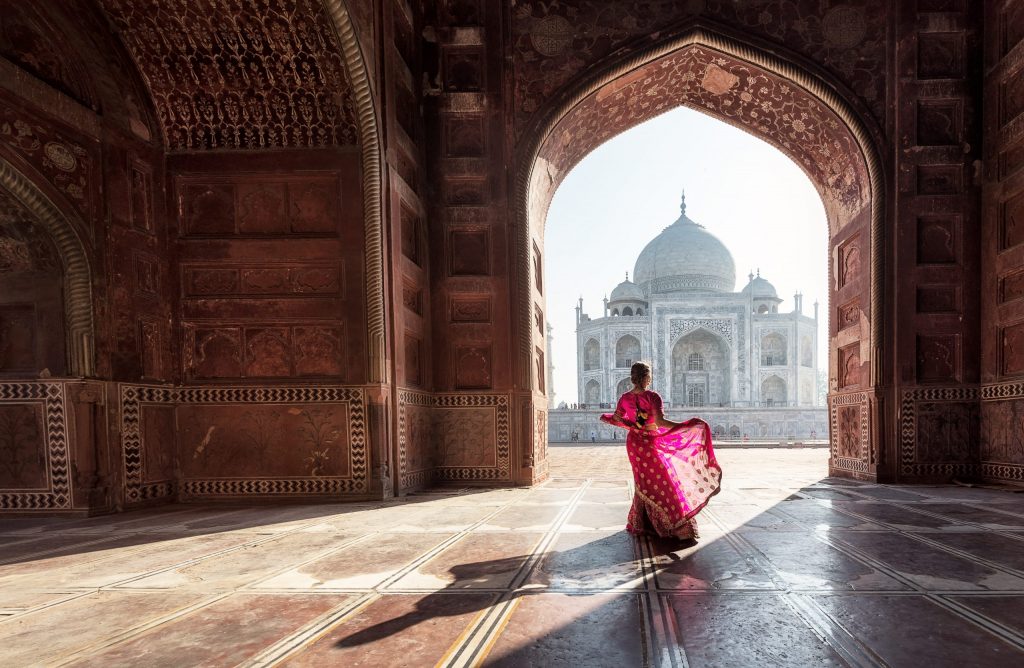
Visitor experience and recommendations
As a visitor to the Taj Mahal, there are certain things you can do to contribute to its preservation and have a more enjoyable experience:
-
Respect the monument: When visiting the Taj Mahal, it's important to show respect for this iconic site. Avoid touching the marble, as the oils from our hands can cause damage over time. Additionally, refrain from littering and dispose of waste properly to maintain the cleanliness of the area.
-
Follow the guidelines: The authorities have established guidelines to protect the Taj Mahal and ensure a sustainable approach to tourism. It's crucial to adhere to these guidelines, such as not exceeding the allowed time limit for your visit and following the designated paths to avoid unnecessary damage.
-
Be mindful of photography: Taking photographs is a popular activity at the Taj Mahal, but it's essential to be considerate of other visitors and the monument. Avoid using flash, as it can potentially harm delicate surfaces. Respect the privacy of others and refrain from obstructing pathways while taking pictures.
-
Stay informed: Before visiting the Taj Mahal, familiarize yourself with its history and significance. Understanding the importance of preserving this architectural masterpiece will allow you to appreciate its beauty even more and spread awareness among others.
-
Spread the word: Share your experiences and knowledge about the Taj Mahal with friends, family, and others who may be interested. By spreading awareness about its conservation needs, you can inspire others to contribute towards its preservation.
Remember that preserving the Taj Mahal is a collective responsibility, and every visitor plays a part in its protection. By following these recommendations and encouraging others to do the same, we can ensure that future generations can continue to marvel at this symbol of eternal love.
